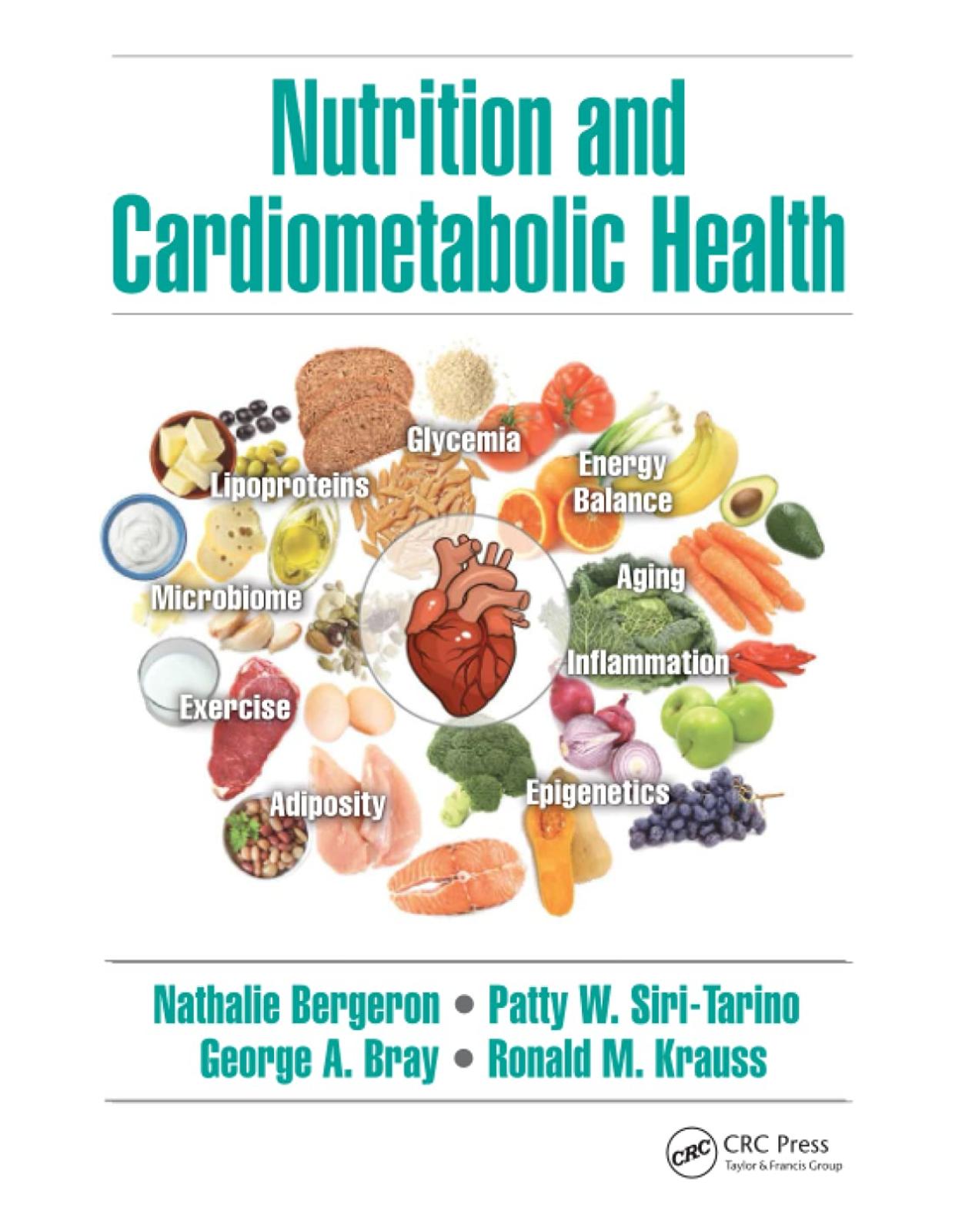
Nutrition and Cardiometabolic Health
Livrare gratis la comenzi peste 500 RON. Pentru celelalte comenzi livrarea este 20 RON.
Disponibilitate: La comanda in aproximativ 4 saptamani
Editura: CRC Press
Limba: Engleza
Nr. pagini: 646
Coperta: Paperback
Dimensiuni: 17.8 x 3.71 x 25.4 cm
An aparitie: 30 Jun. 2021
Description:
Nutrition plays a key role in prevention of cardiovascular disease, the leading cause of death worldwide. Diet influences a broad spectrum of cardiometabolic risk factors, notably a cluster including excess adiposity, dyslipidemia, impaired glucose metabolism and high blood pressure. In the face of the rapidly increasing incidence of obesity and diabetes, maintaining cardiometabolic health through adoption of a healthy lifestyle is a top public health priority. In this book, Nutrition and Cardiometabolic Health, international experts present state-of-the-art scholarly reviews of dietary and lifestyle effects on metabolic systems associated with cardiovascular health and disease. It covers a broad range of topics including biological and behavioral processes regulating food intake; lifestyle and surgical approaches to weight loss; nutritional considerations for optimal cardiometabolic health across the lifespan; the relationship of macronutrients, whole foods and dietary patterns to diabetes and cardiovascular disease; and diet as a modulator of gene expression, epigenetics and the gut microbiome and the relationship of these traits to disorders of metabolism. This book provides its readers with an authoritative view of the present state of knowledge of dietary effects on cardiometabolic health and will be of interest to nutrition and healthcare professionals alike.
Table of Contents:
SECTION I Energy Balance, Adiposity, and Cardiometabolic Health
Chapter 1 Regulation of Food Intake: The Gut–Brain Axis
Introduction
Central Nervous System Regulation of Food Intake
Brainstem Regulation
Hypothalamus
Arcuate Nucleus
Paraventricular Nucleus
Lateral Hypothalamus
Dorsal Medial Nucleus and Ventromedial Nucleus of the Hypothalamus
Neurotransmitters and Homeostatic Control of Food Intake
Neuropeptide Y and Agouti-Related Peptide
Proopiomelanocortin and Cocaine- and Amphetamine-Regulated Transcript
Gastrointestinal Signals That Regulate Food Intake
Gut Hormones
Ghrelin
Cholecystokinin
Pancreatic Polypeptide
Glucagon-Like Peptide-1 and Peptide YY
Glucagon-Like Peptide-1
Peptide YY
Oxyntomodulin
GIP
Amylin
Mechanical Mechanisms
The Ileal-Brake Reflex
The Role of Mechanoreception in Appetite Control
Effect of Bariatric Surgery on Gut Hormones
Diet and the Gut–Brain Axis: Are All Macronutrients Equal?
Conclusion
References
Chapter 2 Overeating Behavior and Cardiometabolic Health: Mechanisms and Treatments
Abbreviations
Introduction
Types of Overeating
Mindless Overeating
Portion Size
Proximity and Visibility
Ambient Factors
Palatability
Categorization Cues and Health Halo Effects
Distracted Eating
Social Influences
Stress-Induced Overeating
Neurobiological Mechanisms Linking Stress and Overeating
Studies of Stress-Induced Overeating in Humans
Stress-Induced Overeating and Cardiometabolic Health
Compulsive Overeating
Neurobiological Mechanisms Underlying Compulsive Overeating
Compulsive Overeating and Cardiometabolic Health
Behavioral Interventions for Overeating
Environmental Approaches
Institutional-Level Environmental Interventions
Individual-Level Environmental Interventions
Environmental Interventions and Cardiometabolic Outcomes
Cognitive-Behavioral Approaches
Cognitive Restructuring
Self-Monitoring
Goal Setting and Goal Striving
Stimulus Control
Problem Solving
Cognitive-Behavioral Protocols for Binge Eating
Cognitive-Behavioral Interventions and Cardiometabolic Outcomes
Independent and Combination Mindfulness Approaches
Independent Mindfulness Approaches
Combination Mindfulness Approaches
Mindfulness Approaches and Cardiometabolic Outcomes
Conclusion
References
Chapter 3 Energy Balance and Regulation of Body Weight: Are All Calories Equal?
Introduction
Energy Balance as a Conceptual Framework
Regulation of Macronutrient Metabolism: Is a Calorie a Calorie?
Models of Obesity That Implicate Individual Macronutrients
The Carbohydrate–Insulin Model
The Protein Leverage Model
The Dietary Fat Model
Body Weight Regulation
Conclusion
Acknowledgment
References
Chapter 4 Diets for Weight Loss
Introduction
Reducing Body Weight Is a Function of Reducing Calorie Intake
Key Factors That Influence Weight Loss
Reduced-Calorie Regimens
Does the Macronutrient Composition of Diets Influence Weight Loss?
Low-Fat versus Low-Carbohydrate Diets
Higher-Protein Diets
Low–Glycemic Index Diets
The Mediterranean Diet
Conclusions
References
Chapter 5 Weight Loss by Surgical Intervention: Nutritional Considerations and Influence on Health
Introduction
Bariatric Surgeries
Roux-en-Y Gastric Bypass
Biliopancreatic Diversion with Duodenal Switch
Biliopancreatic Diversion
Laparoscopic Adjustable Gastric Banding
Sleeve Gastrectomy
Roux-en-Y Gastric Bypass vs. Laparoscopic Adjustable Gastric Banding
Eating Behavior, Protein Consumption Post-Surgery, and Resistance Exercise
Dietary Compliance Post-Surgery
Initial Consultation
Preoperative Screening and Predictors of Postoperative Outcomes
Postoperative Screening
Pre- and Post-Interventions
Vitamins and Minerals
Vitamin D, Parathyroid Hormone, and Calcium
Iron
Zinc
Vitamin K
Vitamin A
Vitamin B12
Folate
Vitamin B6
Thiamine
Conclusion
Future Research
References
Chapter 6 Physical Activity and Cardiometabolic Health
Introduction
Physical Activity and Cardiometabolic Health
Physical Activity and Abdominal Obesity
Aerobic Exercise and Abdominal Obesity
Resistance Exercise and Abdominal Obesity
Physical Activity and Insulin Resistance
Aerobic Exercise and Insulin Resistance
Resistance Exercise and Insulin Resistance
Physical Activity and Dyslipidemia
Aerobic Exercise and Dyslipidemia
Resistance Exercise and Dyslipidemia
Physical Activity and Hypertension
Aerobic Exercise and Hypertension
Resistance Exercise and Hypertension
Influence of Age, Sex, and Ethnicity on PA-Induced CVD Reduction
Efficacy and Effectiveness
High-Intensity Interval Training and Cardiometabolic Health
Sedentary Time as an Independent Risk Factor for Chronic Disease
Sedentary Behavior and Health Risk
Examination of Epidemiological Evidence
Examination of Intervention Studies
Conclusion
References
Chapter 7 Diet as a Potential Modulator of Body Fat Distribution
Abbreviations
Introduction
Macronutrients and Their Relevance for Body Fat Distribution
Lipids
Types of Fatty Acids
Medium-Chain Triglycerides vs. Long-Chain Triglycerides
n-3 Fatty Acids
Conjugated Linoleic Acid
Carbohydrates
Percentage of Energy Intake as Carbohydrates
Glycemic Index/Load
Fructose and Sugar-Sweetened Beverages
Protein
Percentage of Energy Intake as Protein
Branched-Chain Amino Acids
Dietary Patterns
Food Item Subgroups
Mediterranean Diet
Other Nutrients or Food Items
Alcohol
Dairy Products, Calcium, and Vitamin D
Soy and Isoflavones
Dietary Fiber and Whole Grains
Vitamins A and C
Probiotics and the Gut Microbiota
Infant Feeding Practices
Conclusion
References
Chapter 8 Nutritional Considerations for Cardiometabolic Health in Childhood and Adolescent Obesity
Abbreviations
Definition of Obesity in Childhood and Adolescence
Prevalence and Trends of Childhood Obesity
Critical Periods for the Onset of Childhood Obesity
Adiposity Rebound
Causes of Childhood Obesity
Treatment of Child and Adolescent Obesity
Weight Management Goals in Children and Adolescents
Dietary Modification
Semi-Structured Diet Regimens
Meal Replacements
Macronutrient Composition
Fruits and Vegetables
Sweetened Beverages
Physical and Sedentary Activity
Screen Time
Medications for Obesity Treatment
Metabolic and Bariatric Surgery
Surgical Criteria
Cardiometabolic Comorbidities in Childhood Obesity
Hypertension
Cardiovascular Risk
Dyslipidemia of Obesity
Metabolic Syndrome
Insulin Resistance and Type 2 Diabetes Mellitus
Nonalcoholic Fatty Liver Disease
Dietary Intervention and Physical Activity
Pharmacotherapy and Surgery
Summary
References
Chapter 9 Aging and Cardiovascular Disease: Lessons from Calorie Restriction
Aging and Cardiovascular Disease
Calorie Restriction and Human Aging
Proposed Mechanisms by Which CR May Affect Human Aging and CVD
Extension of Life Span due to Slowing of the Rate of Aging
Extension of Life Span due to Prevention or Slowing of Age-Related Disease Onset
Evidence for the Antiaging Effects of CR in Humans
An Unintended Study of CR from the Biosphere 2 Experiment
Self-Administered CR in the Calorie Restriction Optimal Nutrition Society
Short-Duration Interventions with Calorie Restriction
Longer-Duration Interventions with Calorie Restriction
CALERIE 1
CALERIE 2
Alternative Strategies for CR
Timed Eating Paradigms
Alternate-Day Fasting
CR Mimetics
Conclusion
References
SECTION II Dietary Fats and Cardiometabolic Health
Chapter 10 Omega-3 and Omega-6 Fatty Acids: Roles in Cardiometabolic Disease
Introduction
Omega-6 Fatty Acids
Effects on Lipids
Effects on Inflammatory Markers
Linoleic Acid Metabolites
Associations with CHD Events in Prospective Observational Studies
Randomized Trials
Omega-3 Fatty Acids
Effects on Lipids
Effect on Inflammatory Markers
Associations with CHD Events in Prospective Observational Studies
Randomized Trials
Assessing Omega-6 and Omega-3 Fatty Acid Status
Summary
References
Chapter 11 Evolving Role of Saturated Fatty Acids
Primer on SFA Biochemistry and Physiology
Evolving History of Studies of SFA Effects on Lipids, Lipoproteins, and CVD Risk
Metabolic Studies Evaluating Diet and Lipid Profiles
Diet and CVD Studies
Refined CVD Risk Assessment
SFAs in Context
Replacement Nutrient
Atherogenic Dyslipidemia and the Obesity and Diabetes Epidemics
Food Sources of SFAs and Dietary Patterns
SFA Effects on Other Cardiometabolic Health Risk Factors
Variability in Response of LDL-C to Saturated Fat
Applying New Knowledge to Dietary Guidelines
Conclusions
References
Chapter 12 Effects of Dietary Trans Fatty Acids on Cardiovascular Risk
Abbreviations
Introduction
TFA and Risk Markers for Cardiovascular Disease
Serum Lipids and Lipoproteins
Mechanistic Studies
LDL Particle Size
LDL Oxidation
Lipoprotein(a)
Glucose Homeostasis
Blood Pressure
Hemostatic Function
Vascular Function
Inflammation
TFA and Cardiovascular Disease
Intakes and Recommendations
Conclusion
References
SECTION III Dietary Carbohydrates and Cardiometabolic Health
Chapter 13 Epidemiologic and Mechanistic Studies of Sucrose and Fructose in Beverages and Their Relation to Obesity and Cardiovascular Risk
Introduction
Effects Attributable to the Energy in Beverages
Epidemiology
Clinical Studies and Randomized Clinical Trials
Mechanisms for Weight Gain Associated with Soft Drinks
Cardiometabolic Effects Attributable to the Sucrose (Sugar) and Fructose in Beverages
Epidemiology
Mechanisms for the Effects of Sucrose and Fructose
Schematic Model of the Relation of Sugar, Caffeine, and Fructose to Cardiometabolic Disorders
Conclusions and Recommendations
References
Chapter 14 Effects and Mechanisms of Fructose-Containing Sugars in the Pathophysiology of Metabolic Syndrome
Introduction
Description of Metabolic Syndrome
Affirmed Concepts
MetS Risk Factors
Formally Defined Diagnostic Criteria
Other Risk Factors That Are Not Formally Recognized
Residual Risk Factors
Lifestyle Risk Factors
Added Sugars
Consumption Levels of Added Sugars
Sources of Added Sugars
Plausible Mechanisms by Which Consumption of Fructose-Containing Sugar May Promote the Development of MetS.
Unregulated Hepatic Uptake and Metabolism of Fructose
DNL, Hepatic Lipids, and Hepatic Insulin Resistance
Very Low–Density Lipoprotein Production and Secretion
Dyslipidemia
Intramyocellular Lipid Accumulation and Whole-Body Insulin Resistance
Hyperuricemia
Visceral Adipose Accumulation
Inflammation
Fructose Overload versus the Established Paradigm
Dietary Sugar Consumption as a Modifiable Risk Factor for MetS: Scientific Evidence
Observational Studies
Dietary Intervention Studies
Effects of Sugar Consumption on the Formally Defined Components of MetS
Effects of Sugar Consumption on Components of MetS That Are Not Formally Defined: Liver Lipid Accumulation, Insulin Resistance, and other Biomarkers of MetS
Conclusion
Acknowledgments
Conflicts of Interest
References
Chapter 15 Dietary Carbohydrate Restriction in the Management of NAFLD and Metabolic Syndrome
Introduction
Scope of Disease
Hepatic Triglyceride Accumulation
Risk Factors and Etiology
Epidemiology
NAFLD in Children
Treatment
Effect of Carbohydrate Restriction on NAFLD
Low-Carbohydrate Diets in NAFLD
Carbohydrate Quality
Recommendations
Other Dietary Treatments
Antioxidants
Probiotics and Prebiotics
Pharmaceutical Approaches to the Management of NAFLD
Insulin-Sensitizing Agents
Bile Acid Analogs
Pentoxifylline
Summary
References
Chapter 16 Dietary Starches and Grains: Effects on Cardiometabolic Risk
Introduction
Carbohydrate Quantity
Lipid and Lipoprotein Risk Factors
CVD Risk
Glycemic Control
Diabetes Risk
Glycemic Index
Lipid and Lipoprotein Risk Factors
Inflammation
CVD Outcomes
Glucose Homeostasis and Glycemic Control
Diabetes Risk
Whole Grains
Lipid and Lipoprotein Risk Factors
CVD Risk
Glycemic Control
Diabetes Risk
Conclusion
References
SECTION IV Dietary Protein and Cardiometabolic Health
Chapter 17 Interaction of Dietary Protein and Energy Balance
Introduction
Protein Intake in Negative Energy Balance
Protein Intake in Neutral Energy Balance
Mechanisms behind Protein-Induced Appetite Control and Energy Expenditure
Appetite
Energy Intake
Energy Expenditure
Body Composition
Protein Intake and Protein Turnover
Protein Intake in Positive Energy Balance
Reward Homeostasis Related to Dietary Protein
Protein Intake and Cardiovascular Diseases
Adverse Effects of Protein Diets
Summary
Acknowledgment
References
Chapter 18 A Protein-Centric Perspective for Skeletal Muscle Metabolism and Cardiometabolic Health
Abbreviations
Introduction
Protein, Weight Loss, and Muscle Mass
Developing an Amino Acid Perspective about Cardiometabolic Health
Optimizing Meal Pattern of Protein for Body Composition and Sarcopenia
Leucine Defining a Meal Threshold for Dietary Protein
Impact of Protein versus Carbohydrates on Cardiometabolic Risk Factors
Glycemic Regulations
Blood Lipids
Conclusions
References
Chapter 19 Protein Sources, CVD, Type 2 Diabetes, and Total Mortality
Abbreviations
Introduction
Scope of Review
Red and Processed Meat
Epidemiological Studies
Total Mortality/CVD Mortality/CVD Events
Diabetes
Characteristics of Red Meat Eaters
Possible Mechanisms of a Harmful Effect of Red Meat
Red Meat and CVD/Diabetes Risk Factors
Dietary Interventions and Biomarkers of CVD and Diabetes Risk
Dairy
Epidemiological Studies
Total Mortality/CVD Mortality/CVD Events
Type 2 Diabetes
Dairy and Risk Factors for Type 2 Diabetes
Dietary Interventions and Biomarkers of CVD and Diabetes
Longer-Term Feeding Studies
Acute Feeding Studies
Poultry
Eggs
Fish
Epidemiological Studies of Fish Consumption and CVD and Diabetes
Diabetes
Dietary Interventions
Soy Intake, Heart Disease, and Type 2 Diabetes
Dietary Patterns Containing Soy
Isoflavonoid Excretion
Interventions with Soy on Cardiovascular and Diabetes Risk Markers
Nontraditional Risk Factors
Acute Studies with Soy
Conclusion
References
SECTION V Dietary Food Groups, Patterns, and Cardiometabolic Health
Chapter 20 Consumption of Foods, Food Groups, and Cardiometabolic Risk
Introduction
Beverages
Sugar-Sweetened Beverages
Coffee
Alcohol
Foods
Fruits and Vegetables
Dairy (Cheese, Milk, Yogurt)
Eggs
Meats
Fish
Grains and Fiber
Nuts and Legumes
Conclusion
References
Chapter 21 Dietary Patterns and Cardiometabolic Disease
Introduction
Dietary Patterns Methodology
Major Study Designs
Mediterranean Diet
Other Commonly Used A Priori Dietary Patterns
Dash Diet
Healthy Eating Index
Alternate Healthy Eating Index
Cardiovascular Disease
CVD Risk Factors
Type 2 Diabetes
Body Fatness and Body Mass Index
Blood Pressure, Blood Lipids, and Inflammation
Other Popular Diets
A Posteriori Patterns
Cardiovascular Disease
CVD Risk Factors
Type 2 Diabetes
Body Fatness and Body Mass Index
Blood Pressure, Blood Lipids, and Inflammation
Implications and Directions for Future Research
References
Chapter 22 The Mediterranean Diet to Prevent Type 2 Diabetes and Cardiovascular Disease
Introduction
The Mediterranean Diet Pattern: History, Epidemiology, and Randomized Trials
The Mediterranean Diet in the Prevention of Type 2 Diabetes
Conclusions
References
Chapter 23 The DASH Diet
Development of the DASH Diet and Validation in the DASH-Sodium Study
The DASH (Dietary Approaches to Stop Hypertension) Trial
The DASH-Sodium Trial
Subsequent Studies with the DASH Diet Concept: PREMIER and Weight Loss Maintenance
PREMIER Clinical Trial
Other Trials Using the DASH-Type Diet
DASH Diet Compared to a High-Fat DASH Diet
DASH-Type Diet with Alternative Protein Sources
The Omni-Heart (Optimal Macronutrient Intake Trial to Prevent Heart Disease) Study
Effect of the DASH Diet on Cardiometabolic Health
Conclusions
Acknowledgments
Conflicts of Interest
References
Chapter 24 Nut Consumption and Coronary Heart Disease (CHD) Risk and Mortality
Introduction
Early Epidemiological Associations
More Recent Epidemiological Studies
Nut Consumption and Risk of Type 2 Diabetes
Nut Consumption and Metabolic Syndrome Risk
Clinical Trials on Nut Consumption and Coronary Heart Disease
CVD Events
Major CVD Risk Factors
Other CVD Risk Factors
Lipoprotein Particles
Lipoprotein Function
Oxidation and Inflammation
Vascular Health
Insulin Resistance and Glycemic Response
Body Weight
Summary
References
Chapter 25 Dairy Product Consumption, Dairy Fat, and Cardiometabolic Health
Abbreviations
Introduction
Cardiometabolic Risk
Dairy and Plasma Lipid Levels
Dairy and Low-Grade Systemic Inflammation
Dairy and Glucose–Insulin Homeostasis
Dairy, Blood Pressure, and Vascular Function
Dairy Fat and Cardiometabolic Risk
Conclusions
References
Chapter 26 Paleolithic Diets
Introduction
Nutrition during Human Evolution
Carbohydrate-Rich Foods
Other Plant Foods of the Paleolithic Diet
Meat
Fish and Shellfish
Insects and Larvae
Alcohol
Foods with No or Minimal Contribution in Paleolithic Diets
Paleolithic Diets and Absence of Grains
Paleolithic Diets and Absence of Dairy
Nutritional Characteristics of Paleolithic Diets
Contemporary Hunter–Gatherers and other Non-Western Groups
The Kitava Study
Effects of Urbanization
Controlled Trials of “Paleolithic Diets”
Conclusion
References
Chapter 27 Fasting Intermittently or Altering Meal Frequency: Effects on Plasma Lipids
Introduction
Methods
Results
Effects of Intermittent Fasting on Plasma Lipids
Mechanisms for Modulation of Plasma Lipids due to Intermittent Fasting
Effects of High Meal Frequency on Plasma Lipids
Mechanisms for Modulation of Plasma Lipids due to High Meal Frequency
Summary and Conclusion
Acknowledgment
Conflicts of Interest
References
SECTION VI Other Nutritional Influences of Cardiometabolic Health
Chapter 28 Early-Life Nutrition, Epigenetics, and Later Cardiometabolic Health
Background
Evidence from Epidemiology and Clinical Cohorts
Cardiometabolic Outcomes
Evidence from Animal Models
Cardiometabolic Outcomes
Maternal Undernutrition
Maternal Overweight/Obesity
Inflammation and Programming
Transgenerational Effects
Paternal Effects
Strategies for Intervention
Discussion
References
Chapter 29 Gene–Diet Interactions
Abbreviations
Introduction
Genetics of CVD and CVD Risk Factors
Gene–Diet Interactions and CVD Risk
Gene–Diet Interactions and Energy Balance
Gene–Diet Interactions and Glucose-Related Risk Factors
Gene–Diet Interactions and Lipid Metabolism
CVD Risk Has Rhythm
Translation of Knowledge
References
Chapter 30 Gut Microbiome: Its Relationship to Health and Its Modulation by Diet
Introduction
Gut Microbiome
Inflammation and the Microbiome
The Gut as a Metabolically Active Tissue
Microbiota and Their Metabolites Can Affect CVD Risk
Microbiota and Cardiometabolic Risk Factors
Functional Studies of the Microbiome and Cardio-metabolic Health: Study Designs to Understand and Test Mechanisms
Gnotobiotics to Test Microbiota
Human Fecal Transplants
Effects of Diet on Microbiota
Specific Effects of Diet and Potential Interaction with Cardiometabolic Health
Fiber
Polyphenols
Pre-/Probiotics
Food Additives
Interactions between Host Genetics and Microbiota
Host Genetics and Microbial Composition
Altered Microbiota across Life Span
Newborns and Early Childhood
Maternal Diet
Microbiota and Elderly Populations
Summary
Glossary
References
Chapter 31 Alcohol: Associations with Blood Lipids, Insulin Sensitivity, Diabetes, Clotting, CVD, and Total Mortality
Introduction
Blood Lipids
Insulin Sensitivity
Research on Alcohol and Morbidity and Mortality
Diabetes
Clotting
Cardiovascular Disease
Coronary Heart Disease
All-Cause Mortality
Conclusion
References
Chapter 32 Endocrine Disrupting Chemicals, Obesogens, and the Obesity Epidemic
Abbreviations
Endocrine Disrupting Chemicals (EDCs) and Human Health
The Obesity Epidemic
Obesogens, Adipogenesis, and Obesity
In Vitro Exposure to Obesogens and Adipogenesis
In Vivo Exposure to Obesogens during Adulthood and Obesity
Developmental Origins of Obesity
Energy Balance during Development
Obesogens and the Developmental Origins of Obesity
Obesogens and the Transgenerational Transmission of Obesity
Obesogens and Cardiovascular Disease
Conclusion and Future Directions
References
| An aparitie | 30 Jun. 2021 |
| Autor | Nathalie Bergeron (Editor), Patty W. Siri-Tarino (Editor), George A. Bray (Editor), Ronald M. Krauss ( |
| Dimensiuni | 17.8 x 3.71 x 25.4 cm |
| Editura | CRC Press |
| Format | Paperback |
| ISBN | 9781032096131 |
| Limba | Engleza |
| Nr pag | 646 |

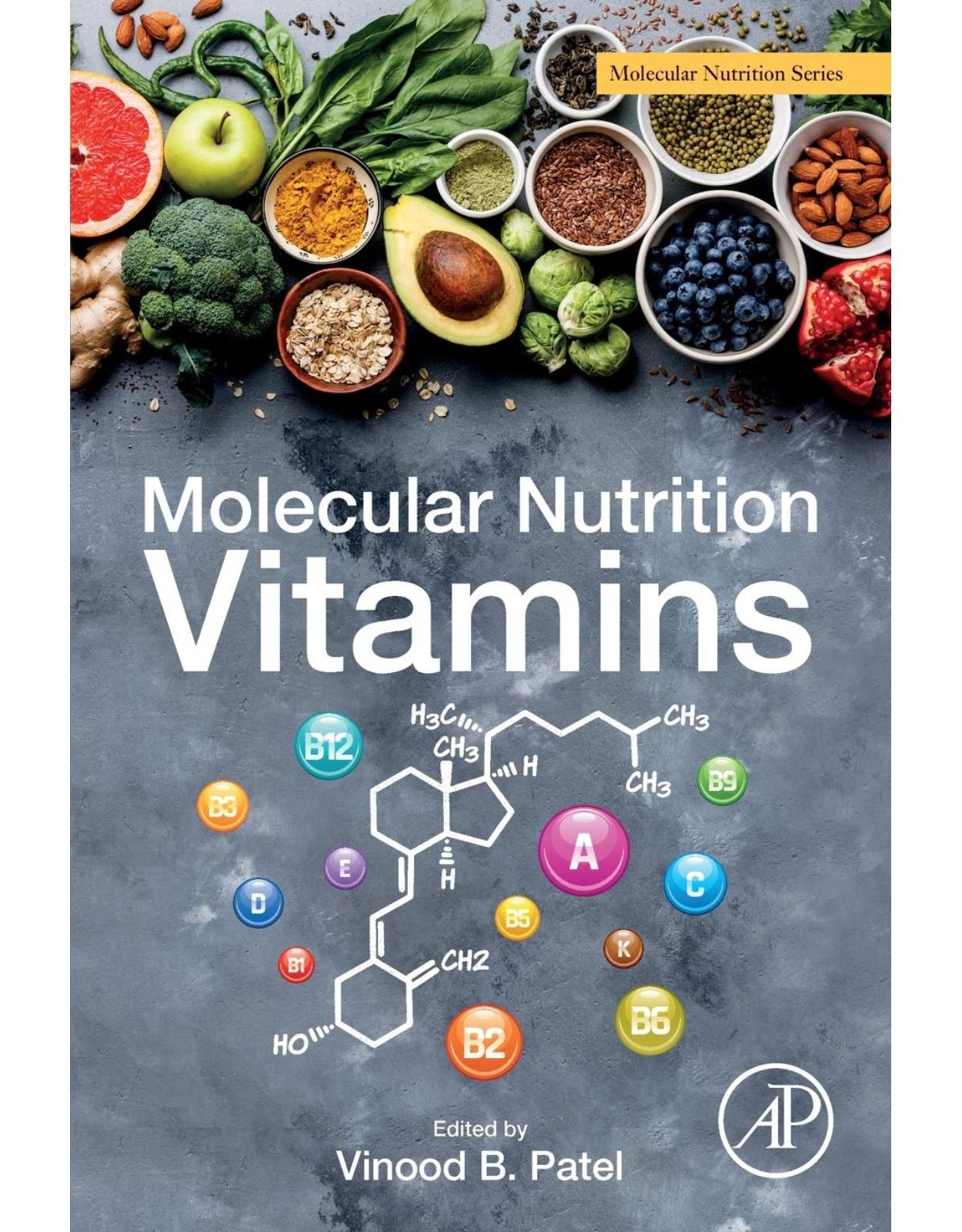
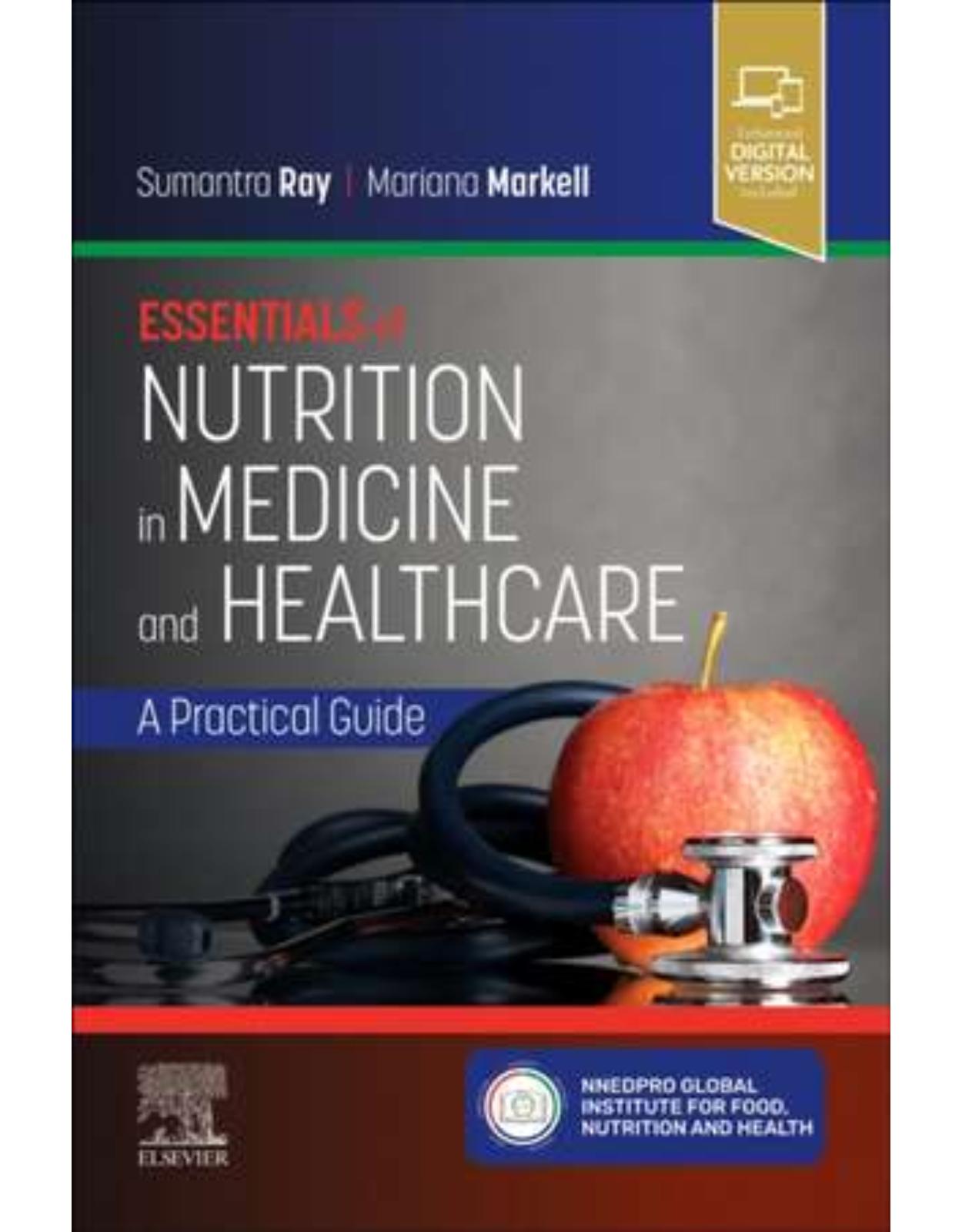
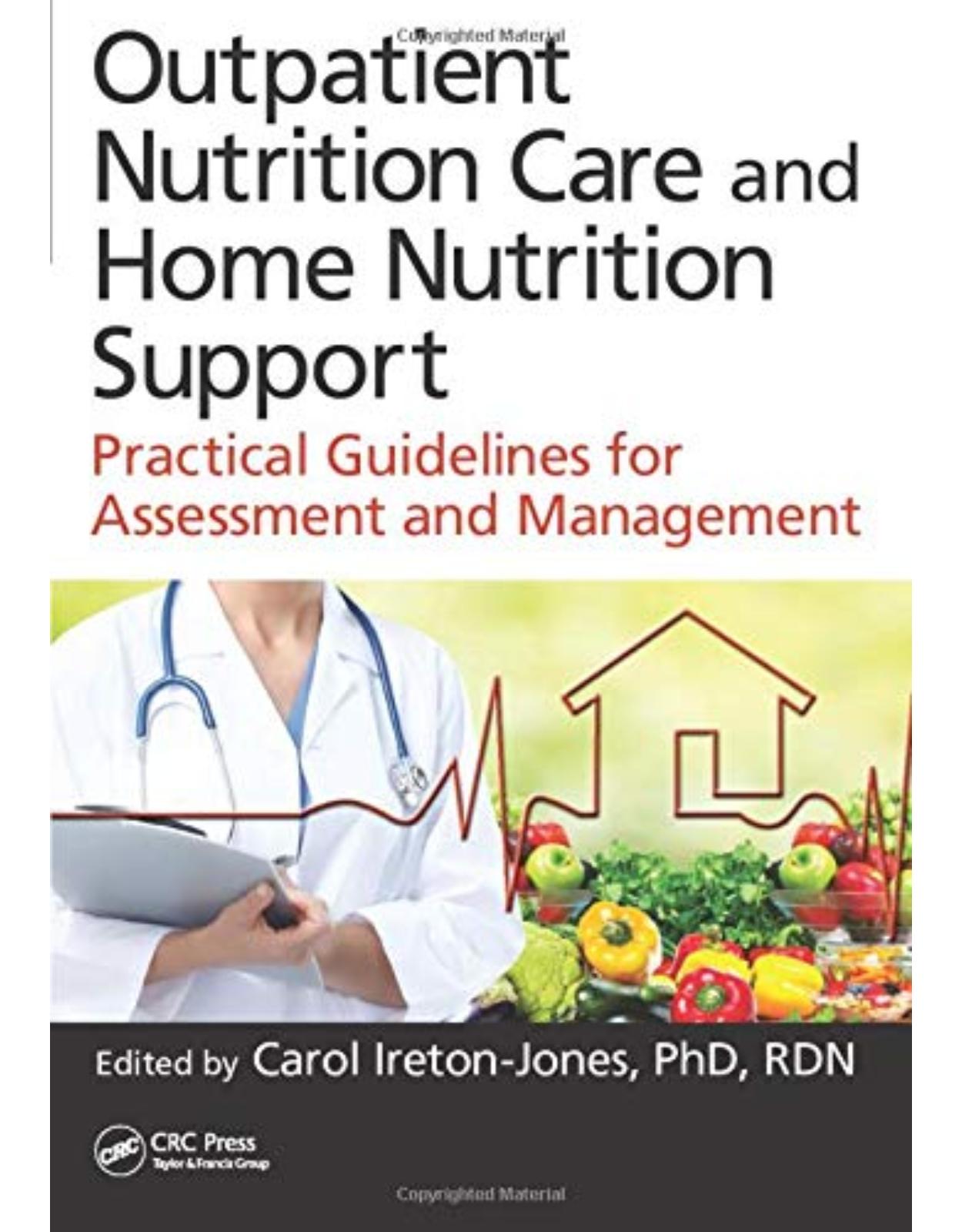
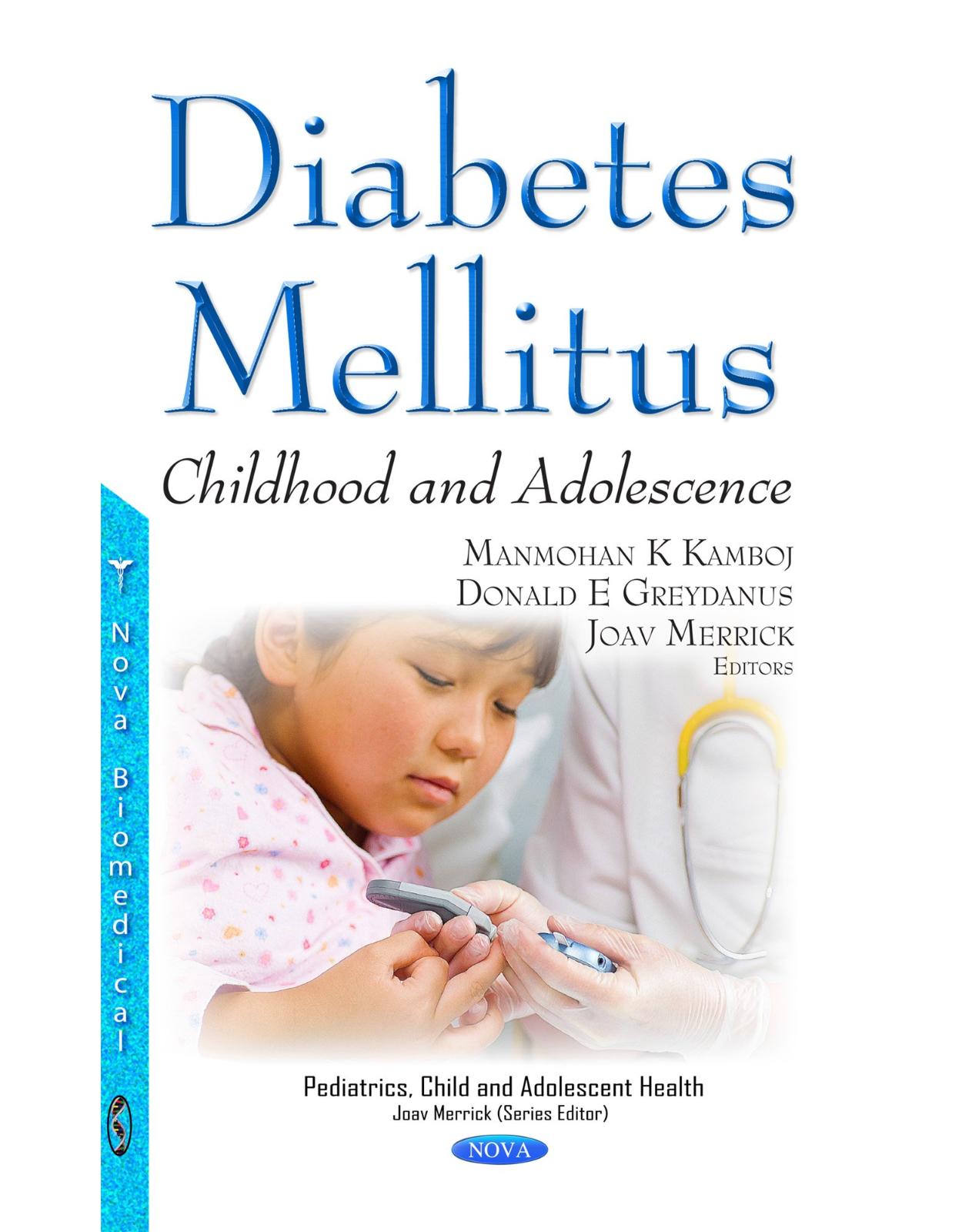
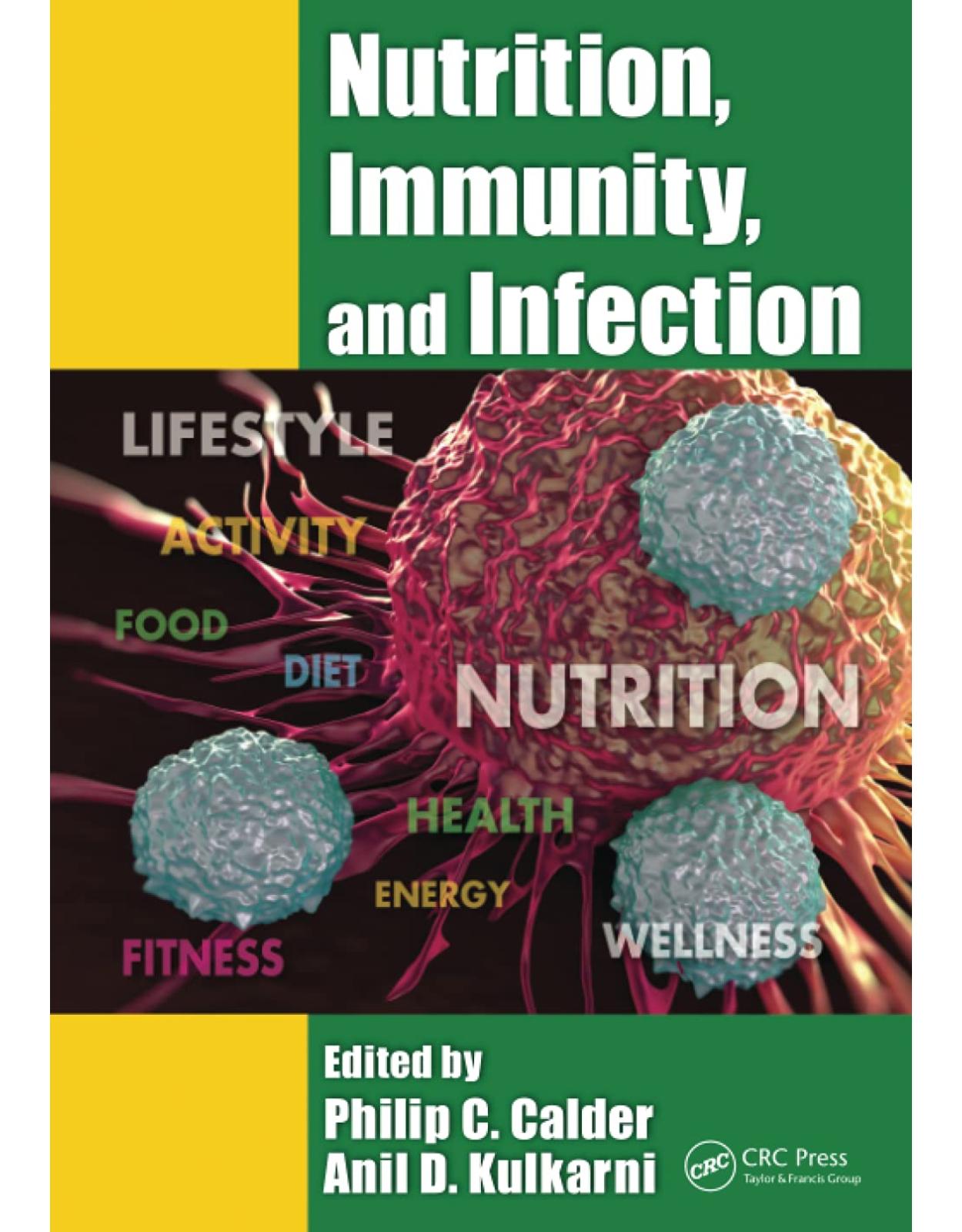
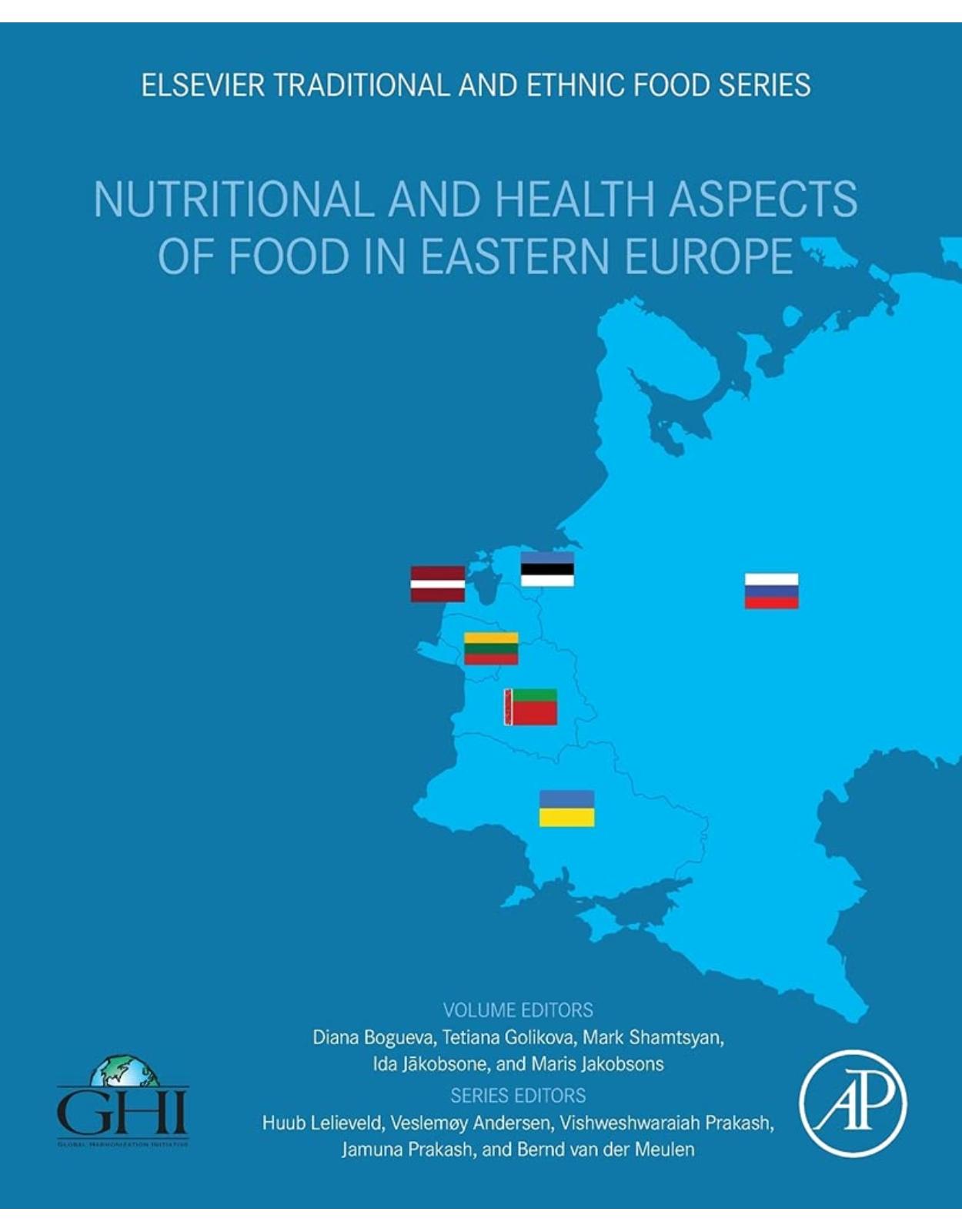
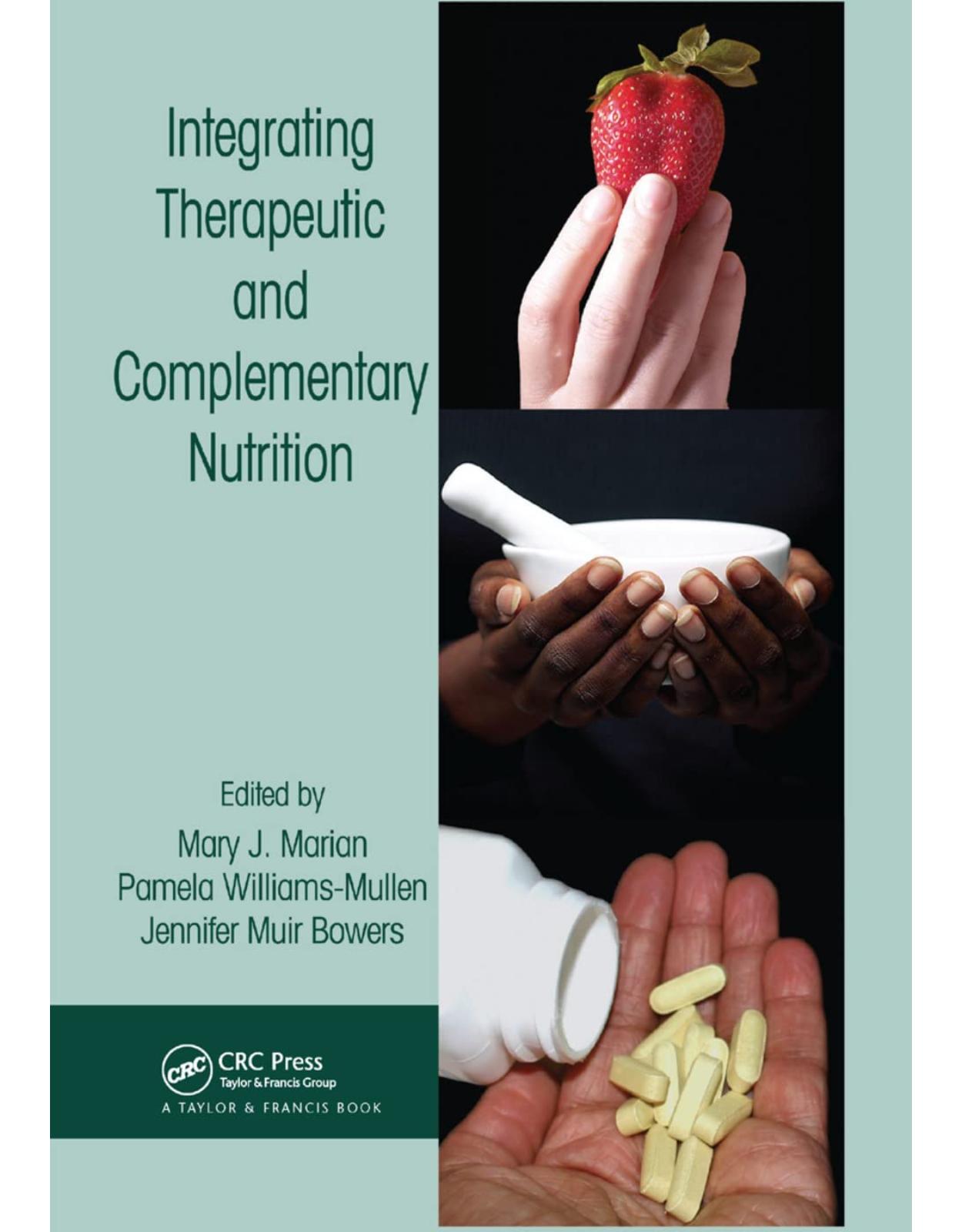
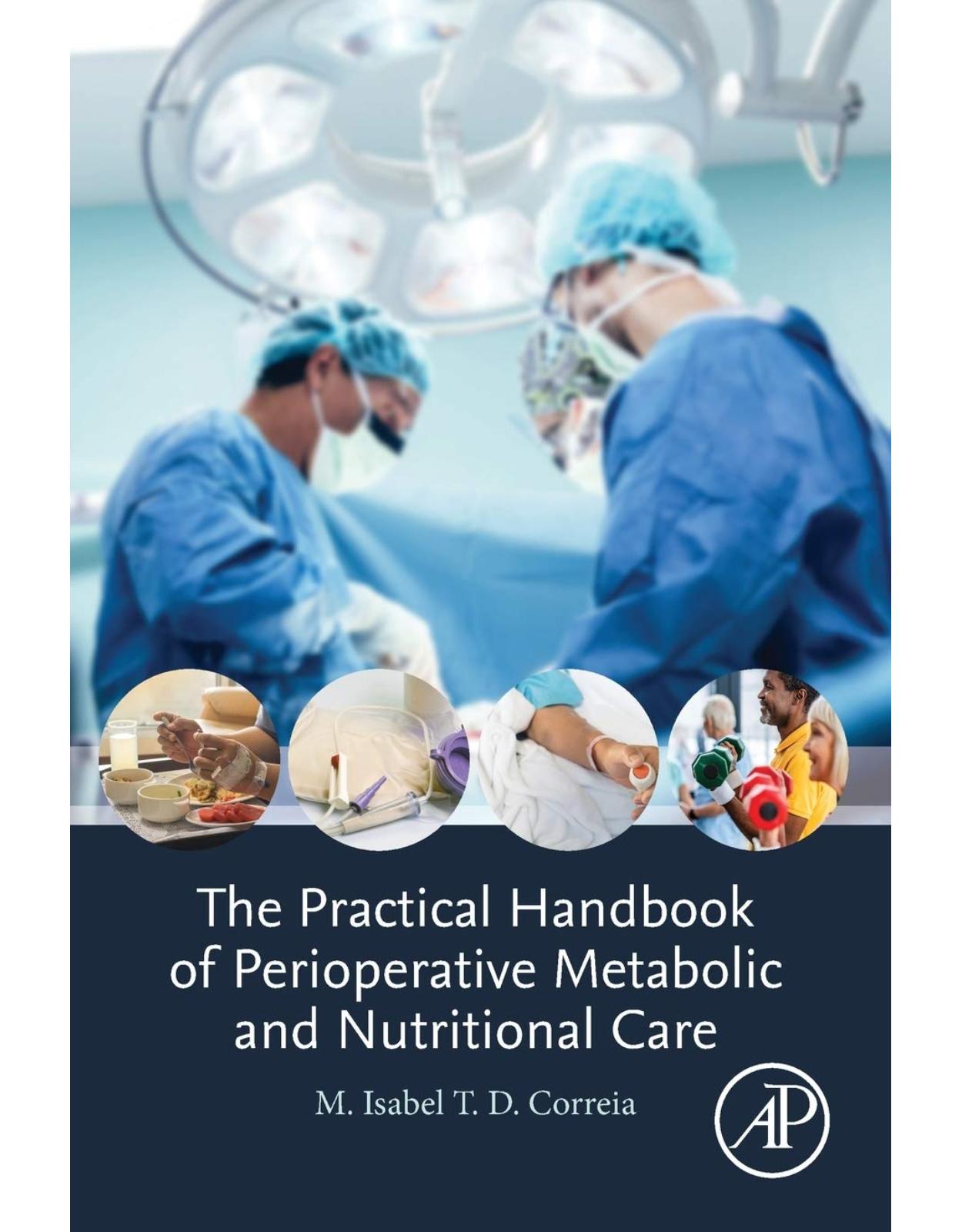
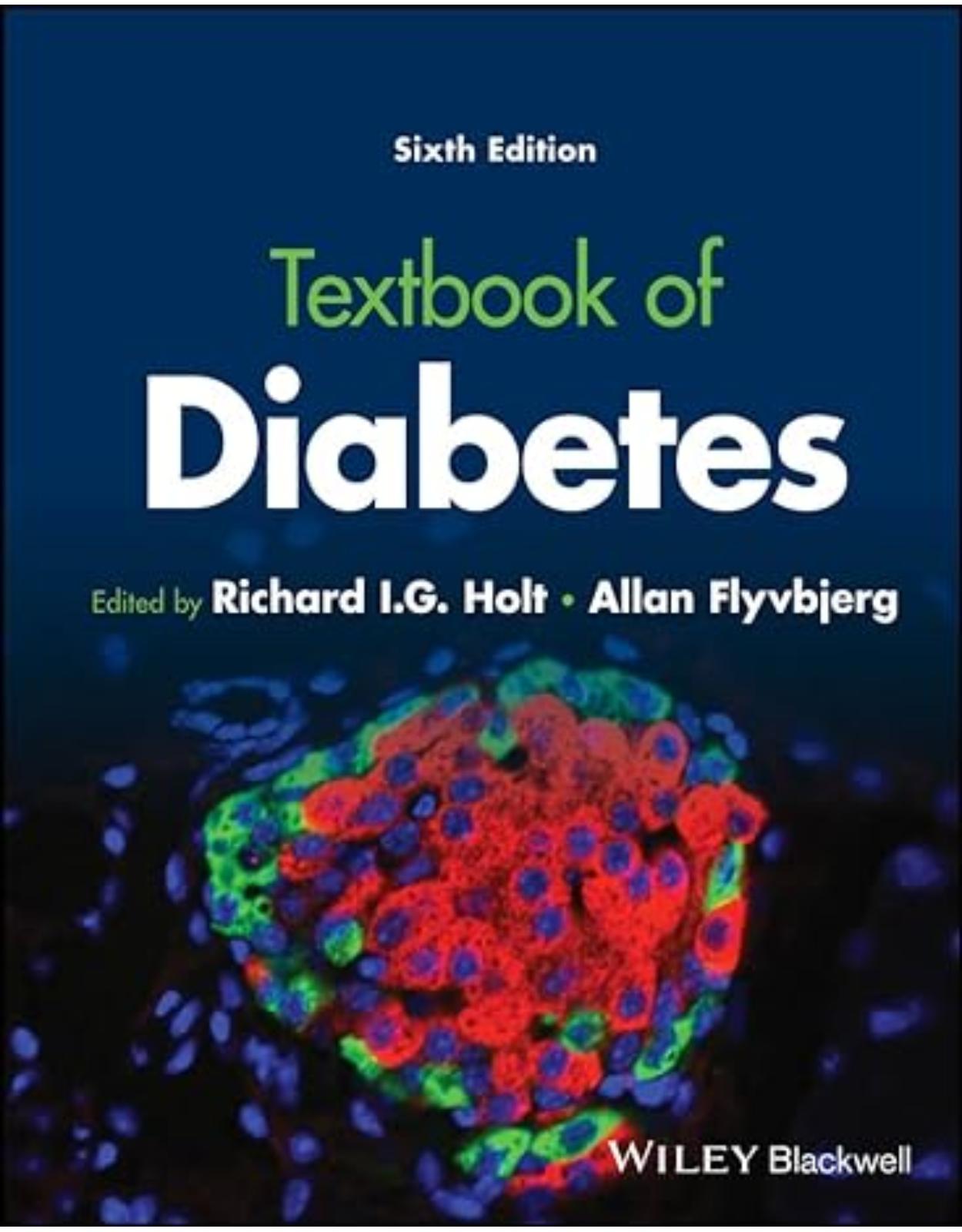
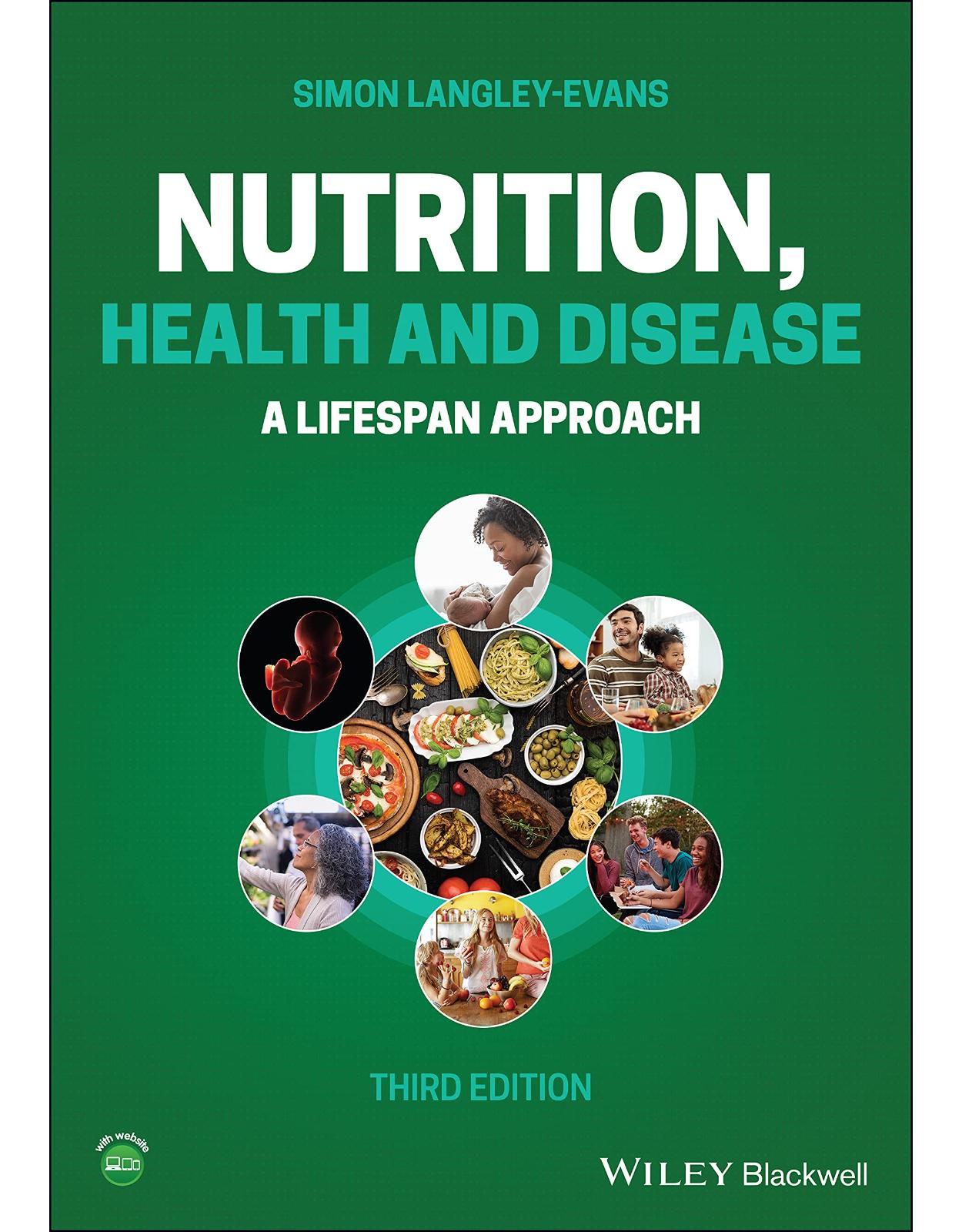
Clientii ebookshop.ro nu au adaugat inca opinii pentru acest produs. Fii primul care adauga o parere, folosind formularul de mai jos.